Austin X6 Range Review
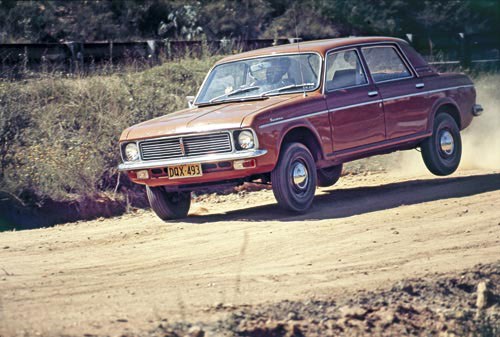 Austin X6 Range
Austin X6 Range

 Austin X6 Range
Austin X6 Range
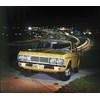
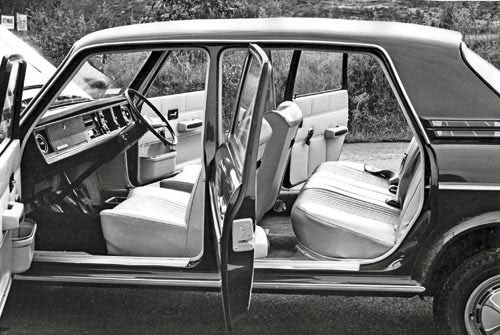 Austin X6 Range
Austin X6 Range

 Austin X6 Range
Austin X6 Range
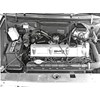
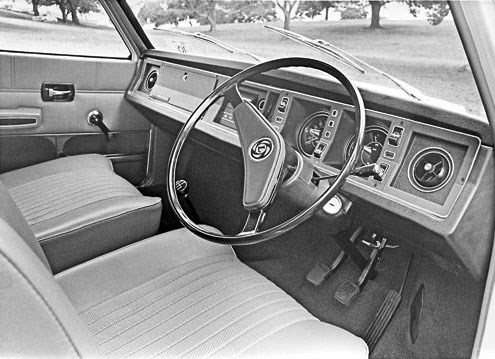 Austin X6 Range
Austin X6 Range

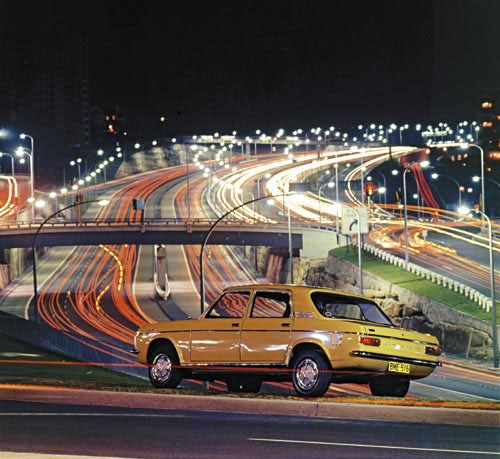 Austin X6 Range
Austin X6 Range


|
|
Austin X6 Range
|

|
|
Austin X6 Range
|

|
|
Austin X6 Range
|

|
|
Austin X6 Range
|

|
|
Austin X6 Range
|

|
|
Austin X6 Range
|
Aussie Original: Austin Land Crab X6 range. Rushed development turned a clever concept into a sales disaster

|
|
Austin X6 Range
|
Austin X6 Range
Not every Australian wanted a big six or V8 family car late in 1970. The unique-to-Oz Austin X6 Tasman/Kimberley range, with its European sensibilities, arrived at a time when private owners of the relatively small EH Holden (and its XM Falcon and AP5 Valiant rivals) were looking for a new car of similar size.
The new Austin X6 range had the cabin space, comfort and performance to be a serious threat to its three larger rivals which, by late 1970, were slaves to the blunt-edged US approach. But after promising early sales, British Leyland's local X6 range had disappeared without a trace by 1973.
So, what went wrong?
The X6 story starts with the parent company's complete home-market switch to the Alec Issigonis engineering approach showcased in the first Mini. The Mini's pioneering transverse drivetrain, front-wheel drive, wheel-at-each-corner stance and, later, "floats on fluid" hydrolastic suspension became so entrenched, BMC Australia was forced to abandon all its simple and well-sorted Aussie models by 1965.
The British Morris 1100 was quickly given a bench seat and a squiggly gear lever to replace the local Major Elite. BMC's Aussie six-cylinder family cars then had to give way to the Austin 1800, powered by a slightly bigger version of the Austin A60 Cambridge four rejected three years earlier. Launched when all local sixes approached or exceeded 3.0-litres, the oddball 1800 could only ever be a niche player.
For local engineers, each new arrival marked another nightmare sequence of faults ready to show up in local conditions. And even if the Mini, Morris 1100 and Austin 1800 shared a quaint family look and space efficiency that reflected Issigonis priorities, their small boots and undersized engines could never hold the tide against rapidly improving Japanese models.
Even after Leyland became involved, there was nothing on the horizon to replace the local Morris 1100 or Austin 1800. Yet neither had posted enough sales for another round of local tooling. Then in 1968, the X6 range based on the Austin 1800 was given the go-ahead. If nothing else, it allowed the Aussies to build on their long list of improvements for the 1800.
For less than what Ford spent on its new six-cylinder engines for the XY Falcon, Sydney engineers delivered what appeared to be a totally new and credible six-cylinder family car. They had changed just six Austin 1800 panels - bonnet, boot, front and rear guards, and filled in the C-pillar to create an entirely new look with a family-sized boot. The doors and seam weld for the extended boot floor were the only giveaways.
Wheelbase was stretched to 108-inches (2743mm), the same as the VE Valiant, with wider tracks. Ground clearance went up, along with fatter wheels and tyres, yet weight went down. Rubber booster springs at the rear assisted the hydrolastic suspension, already cleverly isolated in the 1800 from the stiffest bodyshell in the business. And the standard front disc brakes were given a massive boost in size.
There was even a brand new 2.2-litre OHC six. Little more than two cylinders added to the Morris 1500's new E-series engine, it weighed less than the old four. Reassuringly, the BMC idea of burying the radiator and its power-sapping engine-driven fan next to the left front wheelarch was ditched for a front mounted radiator cooled by Australia's first factory thermo-electric fan.
By comparison, British buyers had to wait until 1972 for this engine to appear as the Austin 2200 with a barely discernible grille change in the old 1800 body.
The Tasman and Kimberley names reinforced the Australian connection while advertising linked the X6 to other luxury brands in the Leyland portfolio. Some say the transverse Issigonis "cross six" layout explains the X6 prefix. Insiders suggest that X6 was a last-minute ploy to subliminally connect the car's suspension refinement and luxury with Jaguar's benchmark XJ6 range.
Encouraged by glowing press reports, local BLMC executives bullishly predicted 17,500 X6 sales in 1971 - its first full year and a huge boost over the 1800's modest 12,000 a year. Although conquest sales from local and Japanese sixes were a priority, the Torana six and the bigger Japanese fours were in X6 sights. The Kimberley, with its twin-carburettor engine, fat bucket seats and quad square headlights was a classy package for late 1970. The plainer looks, bench seat and single-carb engine of the Tasman came with a sharp price tag and better equipment to challenge local rivals.
After posting 1062 sales between its November 1970 launch and year's end, the X6 struggled to finish 1971 with 6765 sales. Even if limited automatic transmission supplies were blamed at the time, they could never explain a nose-dive this big.
In mid-72, the Mk II version with extra glitter inside and out, minus the Kimberley's twin-carb engine, arrived amidst claims that it had addressed any teething issues. But it confirmed far bigger problems before production ended in December '72, leaving hapless dealers to clear the stragglers in 1973 as its P76 replacement introduced another round of woes.
What really happened? Strong early sales suggest the X6 was on the money. Buyers were actively looking beyond the same old rope from local manufacturers, as shown by the high take-up of the locally-built Toyota Crown, Peugeot 504 and Volvo 144.
Yet two years was just not long enough to develop a new model and engine, even one based on existing parts. Everything that had been changed basically went wrong. And because there was no time or money for testing, the Mk II could do little more than sugar-coat the inherent shortfalls.
The X6 overheated from new, its front-mounted radiator and electric fan way underspecified. Deleting the side-mounted radiator also removed the side fan's cooling flow of air over an inlet system mounted directly above trapped exhaust heat. Blocked from any front air flow, the X6 fuel system suffered vapor locks at the first hint of an Aussie summer. The heat from the bigger engine forced local engineers to double the amount of oil in the shared transmission/engine sump. The duct for the passenger's side fresh air vent was then hurriedly diverted into the engine bay, leaving a one-sided trickle of air for the cabin which testers dismissed at the time as a fault of the test car.
Reversing the position of the clutch and idler gears between engine and transmission to make the clutch more accessible backfired as the idler gear fell apart. The whole drivetrain had to be removed and dismantled to fix it. Then whole engines wore out before 80,000km, a product of many issues including the heat, poor matching of valve sizes, timing and breathing. As Holden discovered with its earlier X2 engines, keeping the Kimberley twin-carburettor six in tune for an appreciable gain over the single-carb version was a challenge.
The extra carrying capacity and performance exposed inherent hydrolastic suspension shortfalls. Same-side front and rear suspension units were inter-connected, so that a bump at the front could send extra fluid pressure to the rear in anticipation of the same bump. But the force of heavy braking would also send extra fluid to the rear, further dropping the nose and lifting the tail. This then highlighted the lack of power steering, already an issue with all the drivetrain over the front wheels.
A full boot or towing would reverse the process and send the rear suspension's fluid pressure to the front, prompting the nose to lift and the tail to droop even further. This in turn generated front geometry changes that accelerated tyre wear. The rear helper springs, little more than hollow triangular rubber blocks, would then chop out in protest.
A plunger-type driveshaft joint without the rubber shock-absorbing sections of the 1800 driveshafts fed extra shock into the system and shortened driveshaft life. Engine mounts were also shortlived.
If an X6 survived all this, the plastic dash could then develop a crack and threaten to break in half. This was at a time when the local Morris 1500 was disgracing itself at an even greater pace, sending Aussie buyers at all levels into opposition showrooms pleading for a simple, reliable car.
The X6 styling was originally intended for a British Vanden Plas luxury variant of the Austin 1800 with the MGB's engine. Expert X6 owners suggest that if BMC Oz had released the X6 in 1800S specification until a 2.6-litre version of the new six could be fully sorted and installed properly (it was physically the same as the 2.2) with power steering and the suspension issues sorted, the X6 would have been a sales success.
With the P76's relatively powerful and long-lived 2.6-litre six, the X6 would've made a far better compact alternative than the disastrous Marina six. As an established, reliable back-up, the X6 could have then generated extra time to complete P76 development. Instead, the rush to replace the discredited X6 meant that the P76's troubles were not all of its own making.
*****
More reviews:
> BMC's last stand: Aussie originals by Joe Kenwright
> Austin 1800: Classic by Joe Kenwright
Search used:
>> Search for a used Austin here
Unique Cars magazine Value Guides
Sell your car for free right here
Get your monthly fix of news, reviews and stories on the greatest cars and minds in the automotive world.
Subscribe

.jpg)

.png)



